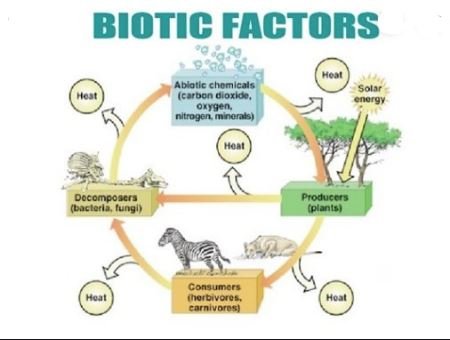Biotic factors: Examples and Definition
What are the biotic factors?
The biotic factors are all those that have life, that is, that are contemplated in one of the realms of life, and whose interactions point to the survival and reproduction of their species. They usually refer to what is contemplated in the flora and fauna of a given environment.
They differ from the abiotic factors in that they are not related to life, but to the surrounding matter and its chemical, climatic, physical processes, etc. Non-organic type.
-
Classification of biotic factors
Biotic factors are classified based on the role they occupy in their ecosystems, and which can be essentially three:
- Producing organisms. Also called autotrophs (they produce their own food), they are living beings that synthesize their forms of energy from non-organic matter. Such is the case of plants, which do so from sunlight and water ( photosynthesis).
- Consumer organizations. Also called heterotrophs (they feed on other living beings), they are those living beings that must consume organic matter to sustain their metabolism and obtain it from other living beings. These living beings can be of two types:
- Herbivorous . Those that feed on plants, seeds, roots, algae or vegetables.
- Predators. Those who hunt and devour the meat of other consumers.
- Decomposers organisms. Also called detritophages, are those living beings that feed on decomposing organic matter, collaborating with the process of “recycling” of matter and energy.
Examples of biotic factors
Some examples of biotic factors can be:
- Forests. Large agglomerations of trees of good size, which serve as habitat for many animals and provide constant organic matter to the detritophages of the soil.
- Fungi and insects. Two of the great types of decomposers, which reduce the decomposing organic matter (dead leaves, bark pieces, remains of dead animals, skin shedding, excrement) and assimilate all the nutrients present in it, leaving the rest to nourish again the earth.
- The big predators. Big cats, snakes, birds of prey: the big consumers of animal meat, which feed exclusively on smaller animals. They keep populations under control and eventually die, adding to organic matter for recycling.
- Phytoplankton. Present only in marine environments, it is a variety of photosynthetic microorganisms that support the entire marine trophic pyramid, as they are food for larger forms of crustaceans (krill) and even large animals such as whales.
- Herbivores of good size. Such as oxen, antelopes, wildebeest, elephants, etc. They feed on tons of plant organic matter, which then supports the large predators and scavengers that will come later.
-
Relationship with abiotic factors
The biotic and abiotic factors are distinguished, as we have said, in that the former has to do with life forms, while the latter with the physical-chemical disposition of the non-organic elements of a given habitat. Thus, while animals and plants are biotic factors, the pH of the soil, the climate and the composition of the soil will abiotic factors.
However, both types of factors are strongly linked, since the state of one reflects on that of the other. The chemical composition of the soil, to cite an example, will directly affect its fertility and therefore the ability to sustain plant life, which will, in turn, sustain consumers and detritophages; but the existence of these life forms will eventually add layers of organic matter to the soil, keeping it fertile and rich in nutrients that will, in turn, fix its chemical composition.
You May Also Like:
- What are Autotrophs?
- What are biogeochemical cycles?
- What is a gaseous state?
- What is Nitrogen Cycle?
- What are Abiotic And Biotic Factors Of The Desert?
